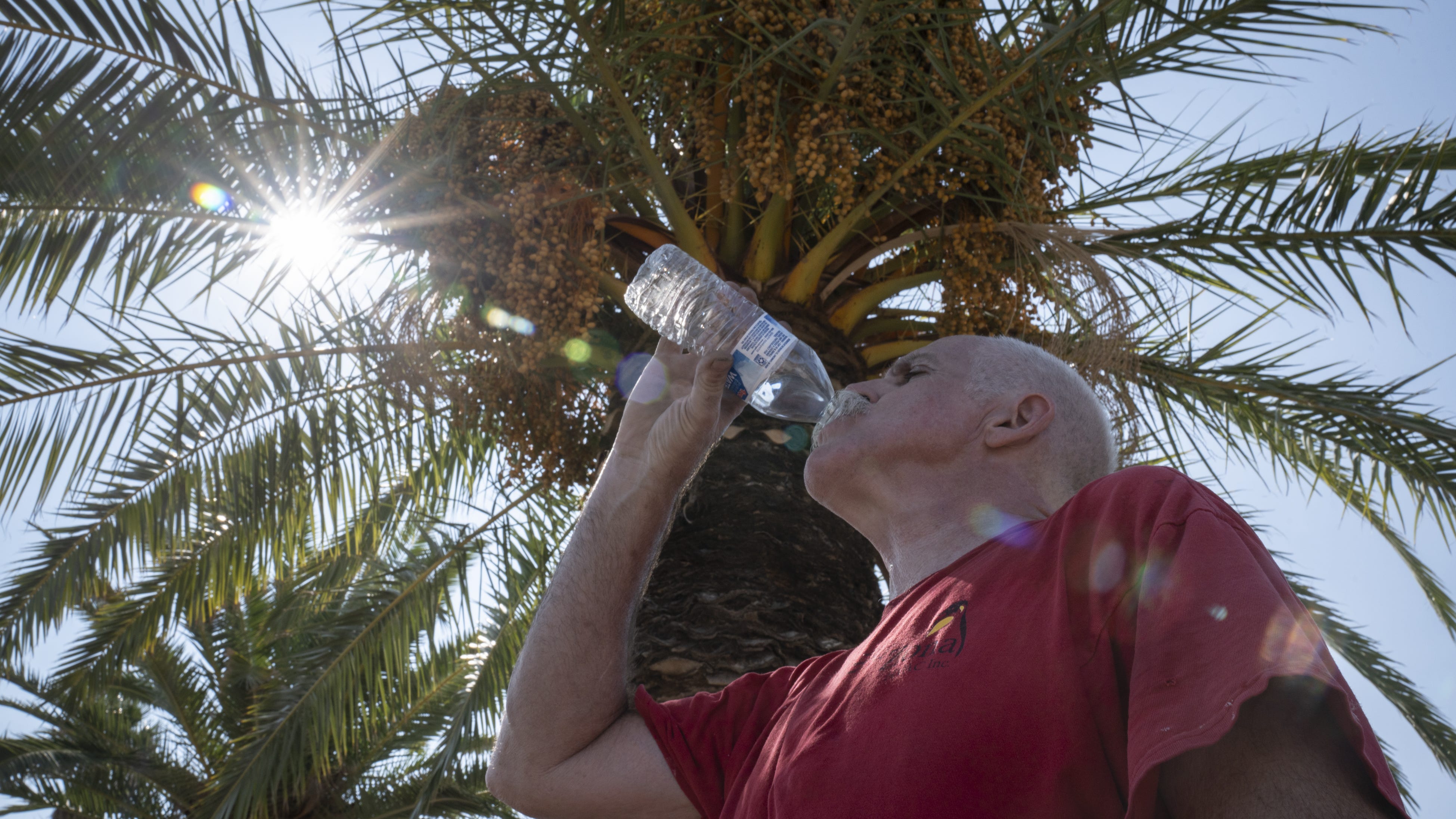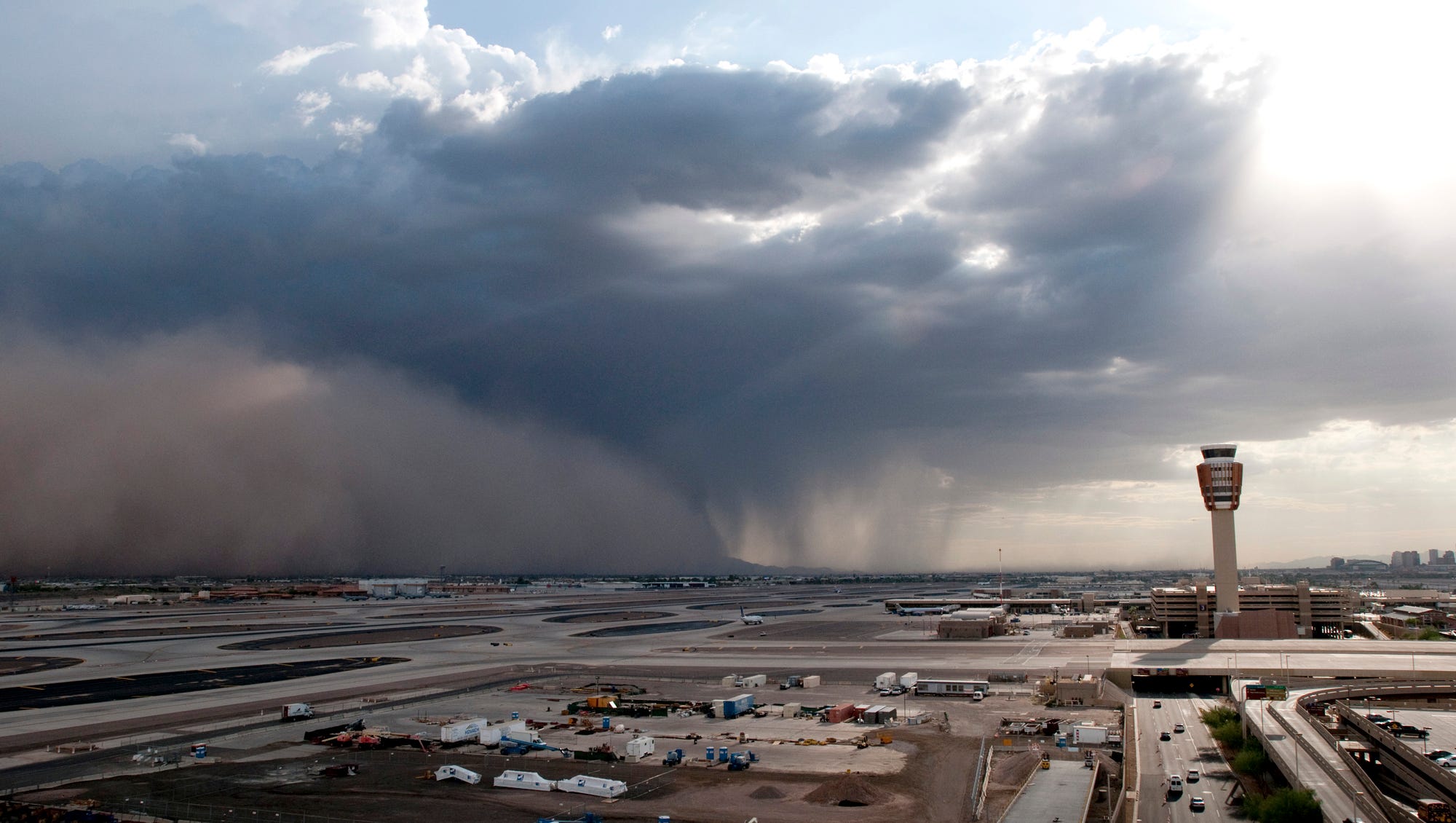
America’s hottest big city: Phoenix adapts to life in the heat
It has always been hot in Phoenix. People live through the heat, if they are fortunate, by adapting.
The Republic
- Hazy skies in the Phoenix area were caused by overnight wind gusts lofting dust particles.
- Stagnant weather conditions contributed to a high pollution advisory for Maricopa County.
- Phoenix’s poor air quality is a combination of smog, particle pollution and dust, worsened by the desert climate and human activity.
As Phoenix residents woke up on July 1, they were greeted by hazy skies hanging low over the Valley.
This dusty haze isn’t just an eyesore; it’s a health concern, especially for those with respiratory issues. The cause? Overnight wind gusts stirred up dust across the desert landscape, and without strong morning breezes to disperse it, the particles remain suspended in the air. Visibility may be reduced, and sensitive groups should limit outdoor activity.
Here’s everything you need to know about why it’s so hazy in Phoenix, how long it might stay hazy and the latest forecast for heat and wind.
Why is it so hazy in the Phoenix area?
It was hazy in the Phoenix area the morning of July 1 because of lofted dust kicked up by elevated overnight wind gusts. These strong winds stirred up fine desert particles, creating reduced visibility.
“Essentially, we’re having a pattern change here as we’ve got a monsoonal type pattern kind of setting up across the region,” said Alex Young, lead meteorologist at the National Weather Service in Phoenix.
“And so as a result of that, we’re seeing some increasing moisture levels starting yesterday and continued through the middle of the week.
“So with this initial surge of increasing moisture, that’s where we saw some strong easterly to southeasterly wind develop during the overnight hours last night, and those directions were southeast enough to where it was able to kick up some dust to our south and east of Pinal County and that’s what caused these hazy skies this morning, as these strong winds picked up some dust and remained lost across the Phoenix metro this morning.”
If you’re up early, or planning to head out the door soon, some hazy conditions are being seen across parts of the Phoenix metro thanks to some lofted dust generated by elevated overnight wind gusts. Use caution when out on the roads this morning. #azwx pic.twitter.com/skviLV7rFM
— NWS Phoenix (@NWSPhoenix) July 1, 2025
What is the smog in Phoenix today?
The Arizona Department of Environmental Quality has issued PM-10 High Pollution Advisories for Maricopa County through the evening on July 1 due to stagnant weather conditions. That means there is considerable particulate matter in the air and sensitive people should stay indoors as much as possible.
“For situations like this where there is a high pollution advisory, it’s an air contaminant that can aggravate heart and lung disease conditions,” Young said.
What is causing poor air quality in Phoenix?
Phoenix’s poor air quality stems from a potent combination of smog, particle pollution and dust, exacerbated by our hot desert climate and human activity.
Vehicle emissions contribute over 50% of ozone-forming pollutants, which react under intense heat and sunlight. The city’s sprawling growth increases traffic and fuel-based household activities that release volatile organic compounds.
Dust storms and monsoon-driven winds lift massive amounts of fine dust into the air, especially during haboobs, adding to air stagnation, heat-trapping topography and high-pressure systems that lock pollutants in place.
The result? Phoenix ranks among the worst U.S. metros for ozone and particle pollution, often posting F-grade poor-air days.

Haboobs: What to know about Arizona’s dust storms
Huge dust storms envelop the Arizona landscape when summer storms hit. Here’s a look at haboobs, and how big they can get.
The Republic
Phoenix weather forecast
Phoenix is baking under a forecasted high of 110 degrees on July 1, prompting an Extreme Heat Warning. While this temperature is typical for July, it’s still dangerously hot and residents should take precautions.
Skies will be partly cloudy and hazy conditions will persist due to lofted dust from overnight winds. Winds out of the south at 10-20 mph may help slowly disperse the haze by evening.
The evening of July 2 brings a forecasted low of around 87 degrees with light easterly winds and continued patchy haze.
“When it’s hot and dry out with not very strong winds, we will end up getting an inversion setup. That’s where pollution will get trapped in the lower parts of the atmosphere, so that’s kind of the nature of that haze,” Young said.
“But this is different in the sense that this haze is caused by lofted dust.”
Got a story you want to share? Reach out at Tiffany.Acosta@gannett.com. Follow @tiffsario on Instagram.